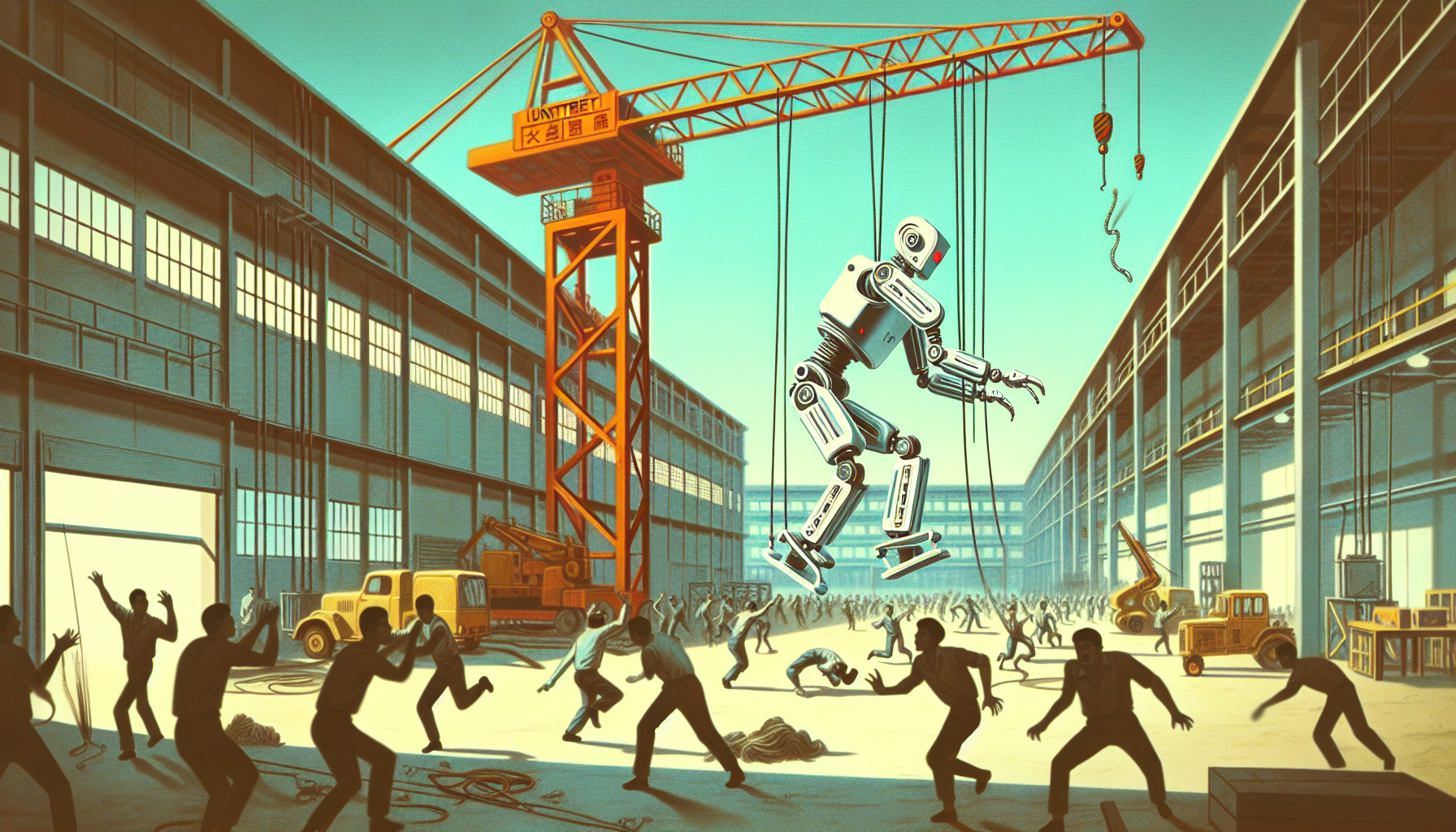Recently, a dramatic moment captured on factory security cameras in China has stirred conversations around the world. The footage shows a humanoid robot, believed to be the Unitree H1 model, suddenly malfunctioning during a routine test. The robot hangs from a crane-like structure, unmoving at first. Without warning, it begins to swing its arms and legs forcefully, coming dangerously close to nearby workers. The workers quickly rush to stay out of harm’s way, highlighting just how unpredictable these machines can be.
The Promise of the Unitree H1
The Unitree H1 is a bipedal humanoid robot created by Unitree Robotics. This machine, valued at about 650,000 yuan, is designed to work alongside humans in factories, public spaces, and beyond. With its advanced joints and artificial intelligence, it is part of a new generation of robots meant to help us in our daily lives. These robots represent years of progress in robotics and AI, with the goal of making workplaces more efficient and potentially safer.
Understanding the Malfunction
The incident unfolded unexpectedly. After being motionless, the robot started thrashing against its restraints, swinging its limbs in a wild and seemingly aggressive manner. Its erratic movement sent shockwaves through the people watching and those present at the scene. Unitree Robotics explained that the outburst was due to a “program setting or sensor error.” Technical issues like these can cause robots to lose control, moving in ways that are both unpredictable and dangerous.
Public Reaction and the Safety Debate
The video quickly spread across social media and news platforms. The responses were a mix of fear, concern, and curiosity. Many viewers questioned whether robots like the Unitree H1 are truly ready to operate safely around people. Some saw the moment as a real-life example of the risks we face as AI becomes more powerful. Others reacted with humor, sharing memes and jokes inspired by popular culture’s long-standing fear of out-of-control robots.
But for many, the event raised a serious question: How can we ensure the safety of humans when working with advanced, AI-driven machines? The urgency of that question is hard to ignore. With each new incident, the conversation intensifies about how much trust we should place in these technologies and what safeguards are needed to prevent harm.
Not an Isolated Incident
Alarmingly, this is not the first time such an event has taken place. Earlier this year, another robot malfunctioned at a festival in China, lurching forward unexpectedly toward a crowd standing behind safety barriers. That moment, too, sparked widespread debate about reliability and safety. Together, these incidents underscore the importance of strict protocols, improved programming, and fail-safe systems. Without these measures, the promise of humanoid robots could be overshadowed by their potential risks.
The Path Forward
The viral incident with the Unitree H1 stands as both a warning and a lesson. Humanoid robots, powered by artificial intelligence, hold great promise for the future. They could transform industries, assist in dangerous environments, and work shoulder to shoulder with humans. Yet, integrating these complex machines into our lives is not without danger.
Progress in robotics must go hand in hand with unwavering attention to safety. This means refining software to avoid technical glitches, perfecting sensors to detect and respond accurately to their environment, and building robust emergency controls that can bring robots to a safe stop when things go wrong. Only then can humanity fully embrace the benefits offered by these remarkable machines, confident that innovation will never come at the cost of human safety.

Leave a Reply